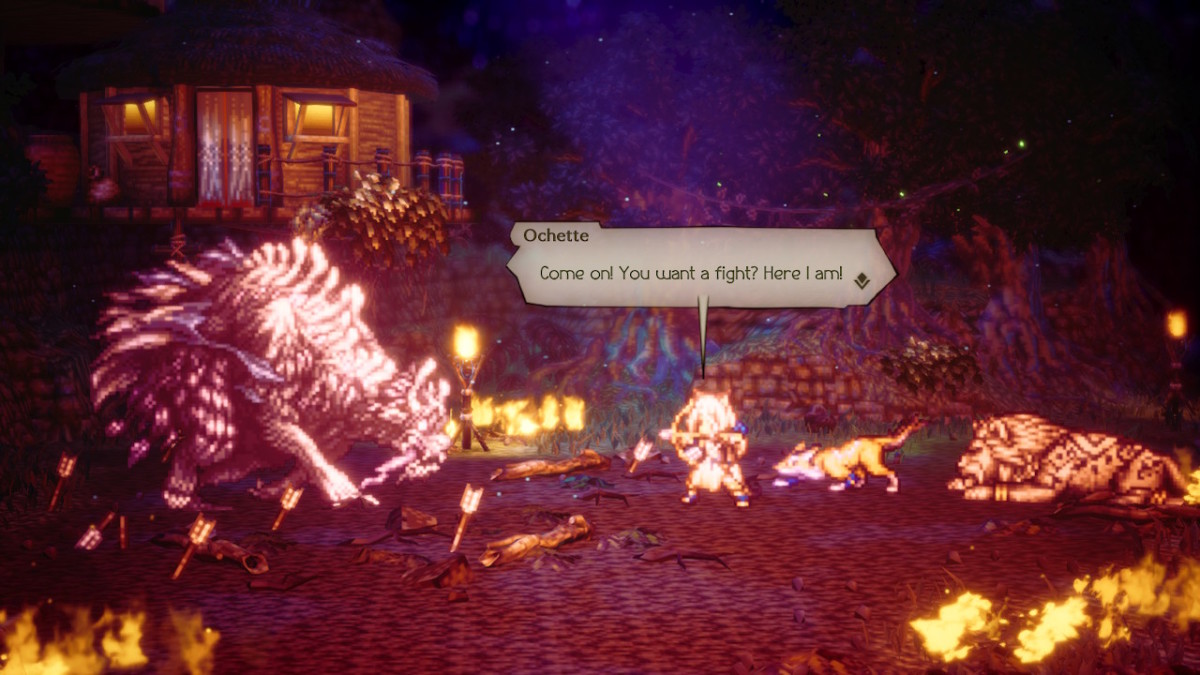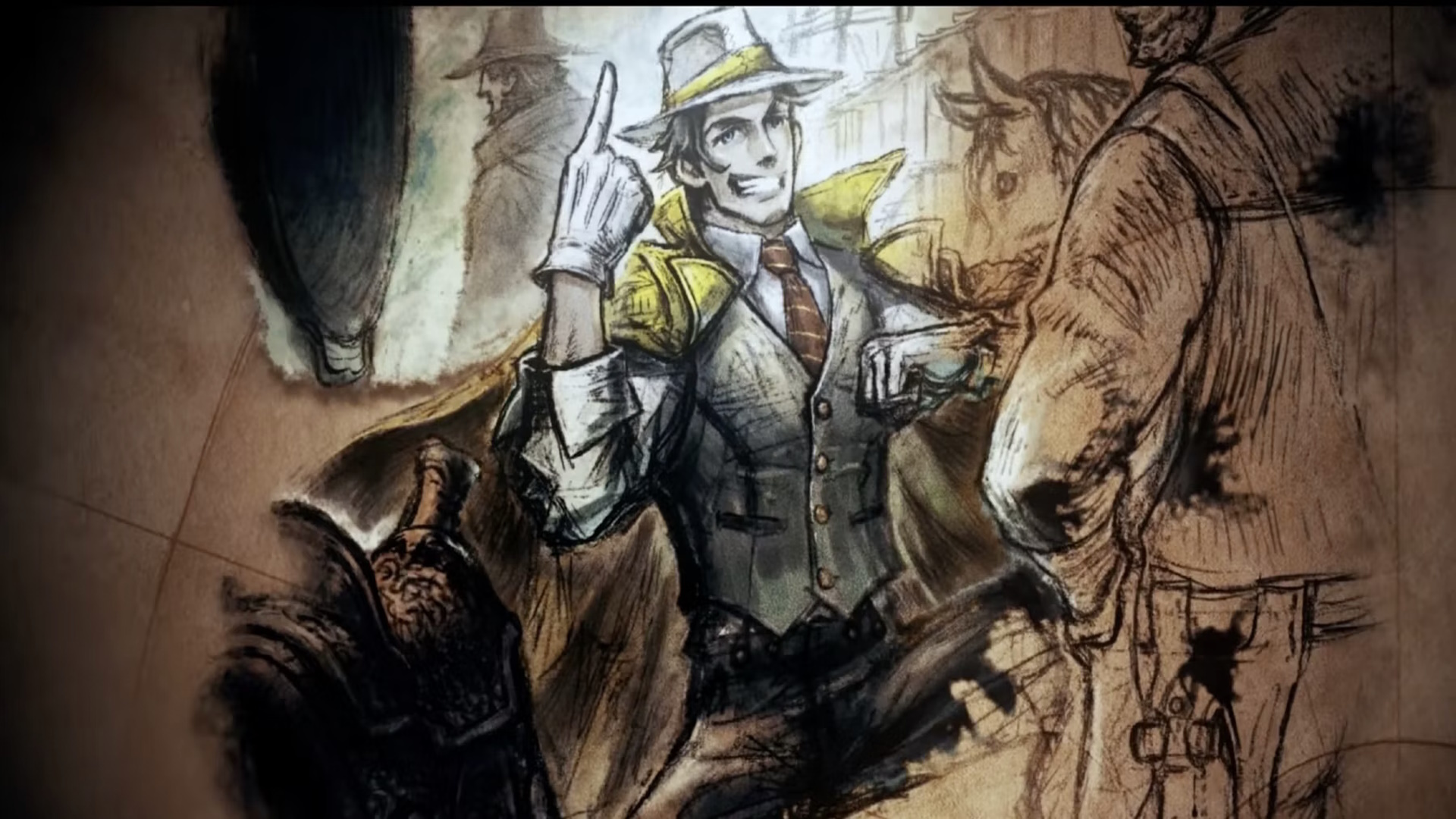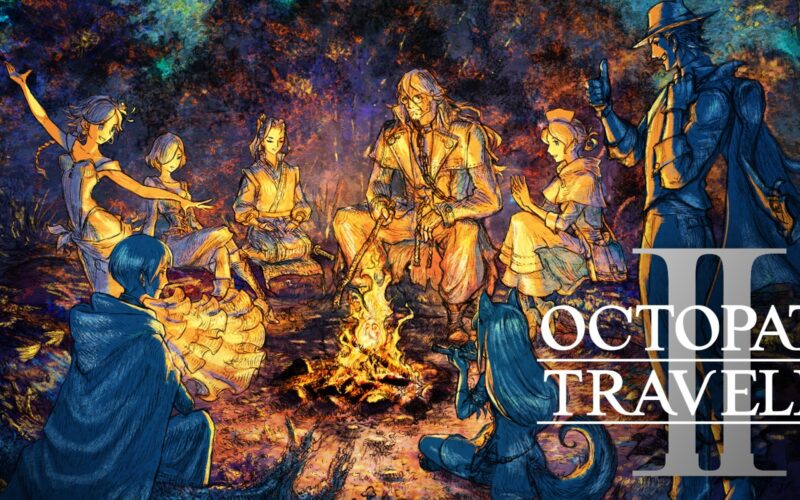I finally get to talk about a relatively niche series that I adore, always a nice feeling! I never got to review the original game as I came to it many months after it’s initial release and it turned out to be the biggest surprise I’d had the pleasure in experiencing in recent memory. A classic 16-bit era RPG with beautiful 3D Visuals and a soundtrack that still remains one of the best I have heard thus far, what’s not to love? Now we have a sequel, and can it match up to the greatness of the original game? Let’s find out!
The story of Octopath Traveler 2 is a bit of a complicated affair as it’s essentially 8 small RPG stories rolled into one package with each character representing the archetype of the class they play as. You have Hikari as the noble japanese-style samurai warrior who must reclaim his lost home from an evil tyrant, the Merchant Partitio who wants to spread wealth and eliminate poverty and so on. What I like compared to the previous game is the ways in which these standard archetypes are subverted to tell interesting and unique stories. For example the Cleric, Temenos, is a narcissistic member of the religious Inquisition who acts more like a socially inept detective rather than the standard sweet, kind and good for everything type of cleric you see in other games. Hell he’s outright critical of his church and wavers on his faith to the gods he represents which is a refreshing breath of fresh air that really helps to shake up the formula. Many of the characters work like this, not being exactly full goody-two-shoes and that makes them far more compelling as characters. However as with the previous game due to the stories essentially being broken up into 8 distinct paths it leaves the overall plot feeling a bit disconnected and only really coming together near the end. While I did like how the plot progressed near the end and I enjoyed most of the stories told by each character this very much is not the type of RPG with a gripping narrative that will stick with you for years to come, but it’s at least enjoyable and different from most standard RPGs.

Presentation is where this game absolutely shines as it’s unique art style is the most distinct and notable thing about the game on first glance. The beautiful 16-bit style pixel art combined with the 3D environments and gorgeous lighting engine make the game an absolute treat to witness. The new day and night cycle helps this too giving distinct atmospheres to each area while retaining that whimsical beauty of all the areas of the game. The only place this falters in to me is animation as most of the standard humanoid characters share simplistic animations which leaves them all feeling a bit like palette swaps at times however enemies and bosses have had animations added to their attacks which help them feel more alive and active in battle so it’s a mix of improvements and things staying the same here it seems. Audio-wise though this game absolutely keeps up with it’s predecessor as it remains absolutely top notch. The music in this game is an excellent mix of beautiful ambient tracks, exciting battle music and the voice acting all services the game well to bring across the personalities of each character and the emotion in various scenes, though at times this does falter a bit and falls into the ‘generic anime’ way of talking which can ruin some emotional scenes once you start to notice it. Regardless this game’s presentation is top notch and I am very happy at the continued stellar performance of both the artists and the composers here.
Gameplay-wise you will feel right at home if you’ve played any of the classic 16-bit Final Fantasy games. It’s turn-based random encounter combat with a party of four characters at a time that each take turns smacking away at the enemies while managing turn orders and special abilities. Unique to this series is the ‘boost’ gauge that allows you to store up attacks to perform powerful moves by doing only basic attacks or abilities on each turn. This also works in tandem with the ‘break’ system which essentially gives every enemy in the game a series of weapon and element weaknesses that you need to hit them with. Once you hit them with enough attacks they are weak to they will be stunned, will lose two turns of moves and will be more vulnerable to damage. The system essentially works by tactically allowing your characters to work in their specific turn order to attack and break the enemy, building up your boost gauge, before unleashing their big power moves on the enemy while they are vulnerable, This system allows you to be a lot more strategic in your moves and breaks away from the turn-based RPG’s focus on just doing the biggest number of damage as quick as possible which is a refreshing change. New in this game is the ‘Latent Power’ gauge which is a bar that builds up as you are hit or you break the enemy’s defenses. When it is full you can activate it and it gives you access to a unique ability based on which character you are using. This can be something like giving you unique abilities, to giving you an extra turn, to even changing the attributes of your character’s attacks. This allows each character to have their own distinctive ability outside of their class which helps them to feel unique. Speaking of which you can mix and match ‘jobs’, what this game calls classes, to give unique strategies or ability combinations, and of course also giving a silly costume change too! Finally the game also allows each character to perform ‘field actions’ which give them unique abilities while interacting with NPC’s such as stealing from them, bribing them, hiring them to follow you etc. This also works with the new day and night cycle that you can toggle with the touch of a button that gives you unique abilities and actions depending on what time of the day it is. This gives a massive amount of complexity to every new place you visit and can even open up unique quests or challenges if you find the right information or take the right item. All of this combines to make for a complex game but it tutorialises it well and I never felt lost at all while playing either of the games, and this entry in particular despite all the new additions felt as though it was just as before the new stuff slotted right into the formula and helped enhance it rather than overcomplicate it.

With all of these nice things however there are some downsides. If you’ve played the first game then you may feel as though a lot of this game is a bit… too familiar. The sequel here essentially is just the first game with a few bits and bobs added which is great for those who enjoyed the first game however if you weren’t a fan of the first then this won’t be enough to win you over. This is especially annoying when it comes to story and, just like the last entry, despite there being a few interactions and chapters between characters the game never really takes full advantage of the large cast of characters interacting until the very end which is a shame as I really enjoyed the relationships there characters had. The game also is old school to a fault, especially when it comes to the awful reality of grind. Personally I don’t mind grind too much as I just switch my brain off and do other things while I grind but this game absolutely encourages you to do so as you don’t get EXP from quests or items, only battles, and as such it can feel like a chore when you get to the end game and all the big challenges can only be completed by killing random monsters for hours on end. Alongside that I actually didn’t feel as though many of the side quests were worth completing. I enjoyed the main story and felt like I had a diverse enough list of things to do but doing many of the side activities mainly just involved doing fetch quests or using someone’s field actions to take one person to another which didn’t offer too much in terms of meaningful story or unique rewards. I’m sure some of the best items are gained this way and while I did do a few to unlock some hidden classes I ultimately did not care much for and did not feel the need to do much of the side activities. As such you’d best hope you like the main story and the characters you play as, otherwise you may be rather disappointed.
Overall then Octopath Traveller 2 has done exactly what I wanted it to, give me more of what I loved from the first game with a few things to make it feel more fresh. I enjoyed the new characters I played as, I liked the new additions to battles and the new day and night cycle really allowed the world to stand out more visually and feel a lot more alive. Still I absolutely realise this is not a game for everyone and if you’re not a fan of some of the more archaic systems of older JRPG’s then you won’t get much out of this game. But if you’re a fan of this genre and are looking for a good time with fun characters then you will have a great experience with Octopath Traveller 2. Now let’s see if Square Enix makes this a full series like Final Fantasy… not sure how I’d feel about getting to Octopath Traveller 12…

